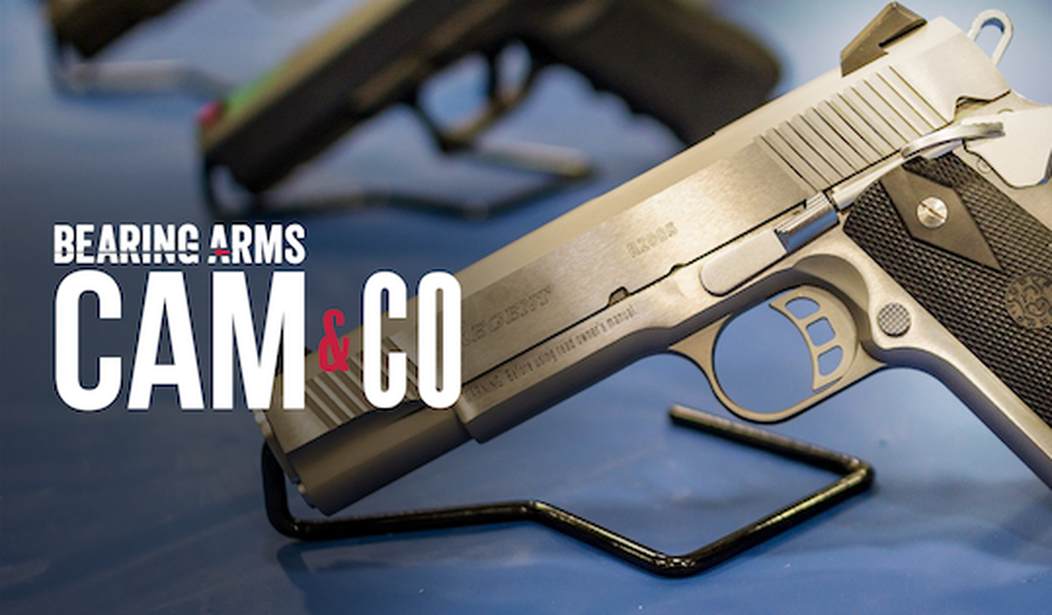When USA Today released the names of the 1,300 or so federally licensed firearms dealers who are on the ATF's "Demand 2" list for selling at least 25 guns that the agency has traced within three years of their original date of purchase, we warned that the story would be used to smear those stores as purveyors of "crime guns".
Even though reporter Nick Penzenstadler quoted an ATF official who said that a "number of factors, including geography, sales volume, secondary market transfers by an original lawful purchaser, and the level of sophistication of firearm traffickers, may be involved in a traced crime gun,” and that "being on their 'Demand 2' list itself is not an indication of wrongdoing", we've seen plenty of local papers breathlessly report on who's supplying "crime guns" in their community.
L.E.P.D. Firearms & Ranger co-founder Eric Delbert tells Bearing Arms he got a call just this week from a reporter with the Columbus Dispatch who's penning a story of their own based on Penzenstadler's original report and wanted to know why the shop "is selling so many guns to criminals."
Delbert says that he was informed by the ATF last year that L.E.P.D. was going on the Demand 2 list after 30 "crime guns" had been traced back to their store. Delbert, who's still a uniformed law enforcement officer in addition to running the store and range, said he couldn't believe it. So, he asked the ATF for the serial numbers of those firearms that were traced and started to do some investigating of his own. What he found shows that the ATF is labeling traced firearms that have no connection to a crime at all as "crime guns" and using those traces to put stores like his under the microscope.
"Their definition of a 'crime gun', and I'm going to read it verbatim from their email, is 'any firearm that is illegally possessed, used in a crime, or suspected by law enforcement of being used in a crime'", Delbert relayed.
Yet Delbert was able to determine that at least one of the "crime guns" traced back to L.E.P.D. came from a collection that had been voluntarily and temporarily turned over to the Columbus police by someone who was going through a divorce and wanted to ensure his guns were safely secured during the process. When he asked for his guns back, one or more were traced.
Even though the Columbus P.D. police report states that the subject of the trace request was "recovered firearm" and explicitly mentions that there was no crime involved in the trace, those firearms magically became a part of the "crime guns" that were cause for ATF scrutiny. Delbert says he determined that least three other guns traced back to L.E.P.D. had been stolen from their owners' vehicles and two others had been taken as part of drunk driving investigations. Those aren't "crime guns", at least as most of us think of the term, but they were still included in the ATF's determination that L.E.P.D. should be put under closer supervision.
"I started talking to my ATF friends and asking them why are we seeing this listed that way, and they said there's been a push in the last couple of years to the agencies to run or to trace any firearm that's in their possession," Delbert relayed.
"So, for instance, I roll up to an accident scene," Delbert elaborated. "The driver is a concealed carry holder and is transported for medical reasons to the hospital. They have their concealed carry gun in the glovebox. As a law enforcement officer, I'm going to hold that for safekeeping, and now in this scenario ATF wants my agency to trace that firearm."
Keep in mind that the ostensible purpose of the Demand 2 program is to help the ATF identify gun trafficking patterns. By including virtually all traces, even those that aren't connected to a crime in any way, the Demand 2 program is actually making it harder to find those patterns. In fact, Delbert says it doesn't make any sense to tie the program to a total number of guns that were traced back to any particular store, which is inevitably going to capture more high-volume sellers. Instead, he says the ATF should be looking at the percentage of a store's total sales that resulted in a quick time-to-trace, and for actual crimes instead of categories like "recovered firearm" or "carrying a concealed weapon".
Why is the ATF conducting its Demand 2 program in such a backward fashion? Well, Delbert has a theory about that too.
The 'punishment' for this is that now, on a quarterly basis and indefinitely, we have to provide them with a list of all used guns in our inventory. Everything about this points towards 'hey, this is a way of getting in your books', gathering data, starting a list, whatever you want to call it. But it is certainly not what it appears to be."
If this really is another way for the ATF to conduct fishing expeditions, it would make sense that the agency is relying on the raw number of guns that were traced within a three-year time frame instead of a percentage of sales, as well as including traces for things like "recovered firearms" instead of only including traces that involved firearms that were used in violent crimes. With high-volume sellers more likely to end up on the list, the ATF can get access to those books instead of spending time and energy on kitchen table FFLs or smaller mom-and-pop shops that don't have a large customer base. Many of those larger stores would be weeded out if the ATF based its Demand 2 determination on the percentage of guns that were sold and quickly traced, which isn't an issue if the goal is to identify gun trafficking networks, but would definitely pose a problem if the ATF's real intent behind Demand 2 is to get access to as many records as possible.
The USA Today story that named and shamed FFLs for being on the Demand 2 list was bad enough, but Delbert's experience raises real questions about how the Demand 2 program is being run and whether it's even necessary. At the very least there are significant issues with the parameters of the Demand 2 list, and I hope that Delbert will take his concerns to Ohio's senators and representatives in addition to his outreach to the media. I have a feeling the House Oversight Committee would be very interested in what Delbert has to say about the program and how its being run.
Check out the entire conversation with Eric Delbert in the video window below, and stick around afterward for today's armed citizen story, our Recidivist Report, and our Good Deed of the Day.









Join the conversation as a VIP Member